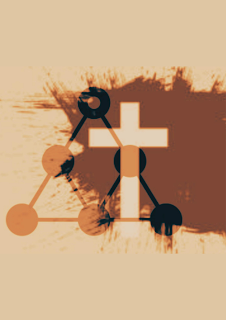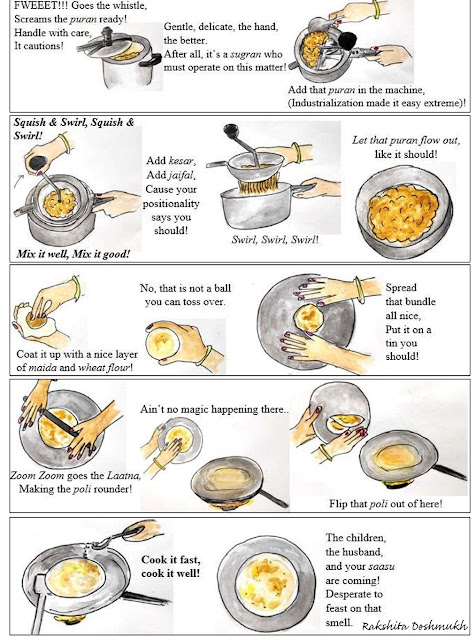Pride and Prejudice- Uncovering India's LGBTQ+ past
Rohaan Panjwani
FYBA
“Without deviation from the norm, progress is not possible.” - Frank Zappa
Social norms refer to the unwritten or the unspoken rules and expectations set by the society. Human beings which constitute the various stratas of the society are intrinsically expected to follow these rules and fulfil these expectations. Any action or inaction which violates these set norms would result either in their abandonment from the society or them getting charged with excruciatingly stringent penalties. This is because deviation from the norms is considered to be extremely incongruous and highly inappropriate.
In this contemporary society that we live in, identifying yourself as either a male or a female is the norm. Anything beyond this would be considered as a deviation from the norm. Why is the present-day society so rigid when it comes to accepting the LGBTQIA Community? What are the prevalent stereotypes and prejudices existing in the present day society with respect to the LGBTQIA community? Why is being a gay, lesbian, bisexual, transgender, queer, ace or intersex not a norm? These are some of the questions which are explored and answered in this article.
The terms gender identity, gender expression, gender and sexuality may appear to look all identical but are all different from each other. Gender identity refers to how a person sees themselves in terms of their gender. At birth babies are assigned gender on the basis of their genitalia. This criterion of assigning gender is not best suitable as it does not necessarily reflect their true gender. People who identify with the sex they were assigned at birth are called cisgender. Whereas, people who do not identify with the sex they were assigned at birth are called transgender or non-binary or both. Transgender are people who neither identify as a male nor female. Non-Binary is a term used for people who express their gender beyond male and female. They may identify as both male and female, neither male nor female and may not identify with any gender type at all. They may also use the term fluid to describe their gender. This simply means that their gender may fluctuate or change over time. Agender, gender fluid, bigender, genderqueer and third gender are various terms used for non-binary people.
Gender expression is how people express themselves in terms of their gender. This expression can be in the form of clothing, hair and even interests. It is pivotal to know that the way people choose to express themselves may not always reflect their gender. For example if a trans man decides to have long hair and wear make up, he would still identify as a trans man. If a trans woman decides to have short hair she would still identify as a trans woman.
Gender is based on the genitalia you were born with. You can either identify as a male or a female based on the above criteria. Sexuality on the other hand is based on who you are attracted to. A man who is attracted to another man is termed as gay. Gay is also a term used for a person who is attracted to another person of the same sex. In this case, a woman who is attracted to another woman can also be termed gay. More specifically, a woman attracted to another woman is called a lesbian. Bisexuality is a term used for a person attracted to the same as well as the opposite gender. Queer is an umbrella term used for people who are not heterosexual and non-cisgender. Intersex is a term used for people who are born with reproductive organs that do not fit in the frame of binary concepts of male and female. The family may decide to perform surgeries on the intersex babies. They would raise the child as per the genitalia of the baby. Asexual is a term used for people who are not attracted to any gender whatsoever. They may however experience romantic attraction.
According to the research paper written by Andrew R. Flores, 57 countries experienced a decline in the acceptance rate towards the LGBTI community. Out of the total 175 countries considered for this research, India stood 51 on the GAI (Global Acceptance Index). The Trevor’s Project 2023 U.S National Survey on the Mental Health of LGBTQ Young People amplifies the experiences of 28,000 LGBTQ young people from the ages of 13 to 24 across the United States of America. According to this research survey report about 41% of the young LGBTQ people seriously considered attempting suicide in the past year. Lack of quality mental health assistance, lack of family support, self-destructive policies by the government, are all responsible for the high rates of suicide among the young LGBTQ youth all around the globe. The struggle towards acceptance and representation for the LGBTQIA community has achieved a great deal right from homosexuality being considered as unnatural and a criminal offence under Section 377 of the Indian Penal Code under the British rule to the Indian government declaring section 377 as unconstitutional.
Even after such a long legal battle to decriminalise homosexuality, people still have a hard time accepting it. Homosexuality is still illegal in 73 different countries. People still consider homosexuality a sin. The religious taboo surrounding the concept of homosexuality force people to not educate themselves about what the LGBTQIA community stands for, it leaves them in the dark to not know the number of people who commit suicide every single year because of their own lack of knowledge. An endless number of teenagers and adults wait to come out to their families every year. They are either exiled from their homes because of the religious taboo or are asked to consult a medical practitioner or a psychologist so that their sexuality can be altered.
People from the LGBTQIA Community are still looked upon with shame and prejudice. They are constantly teased, bullied, and made fun of because it goes against the norm. Apart from this to add insult to injury the society carries certain vague and unjustified stereotypes about people who are third gender. Although homosexuality was dropped as a psychological disorder by the APA (American Psychiatric Association) in the year 1973, contemporary society still stigmatises it. The society lives with the notion of the LGBTQIA+ as being different from the others. Homosexuality still isn’t the norm in the society that we live in.
Homosexuality is now accepted in many parts of our country but not in the numbers that would make it a norm. It still remains a controversial topic. The scars on the LGBTQIA community can be uplifted only if it becomes a norm and finds a place in every home. Can pride ever be separated from prejudice? This is a question we must ask ourselves. In the end, it all begins with one person, one thought, one action, one plan. The ability to constructively challenge the social norms, reform them and bring productive change in the current existence of the prejudiced societal strata all begins with you and only you.
“People may hate you for being different and not living by society's standards but deep down, they wish they had the courage to do the same.”
References
Avery, D., Uygur, C., Gordon, D., Faris, D., Brown, P. T., Troy, G., & Chang, G. G. (2019, April 4). 71 Countries Where Homosexuality is Illegal. Newsweek. Retrieved September 24, 2023, from https://www.newsweek.com/73-countries-where-its-illegal-be-gay-1385974
Cherry, K. (2023, June 2). What Does LGBTQIA+ Mean? Verywell Mind. Retrieved September 24, 2023, from https://www.verywellmind.com/what-does-lgbtq-mean-5069804
Flores, A. R. (2021, November). Social Acceptance of LGBTI People in 175 Countries and Locations. Williams Institute. Retrieved September 25, 2023, from https://williamsinstitute.law.ucla.edu/publications/global-acceptance-index-lgbt/
López, Q. (2020, November 13). Explained: Difference Between Gender, Gender Expression, and Sexuality. Business Insider. Retrieved September 24, 2023, from https://www.insider.com/explained-difference-between-gender-gender-expression-and-sexuality-2020-11
Queer vs. Gay: How The Words Are Different, And Why It's Important. (2023, June 13). Dictionary.com. Retrieved September 24, 2023, from https://www.dictionary.com/e/queer-vs-gay/
Toohey, M. (2020, December 4). Gender Identity Basics: Understanding Non-Binary, Transgender, and Gender Fluid People. Therapy Changes. Retrieved September 24, 2023, from https://therapychanges.com/blog/2020/12/understanding-non-binary-transgender-gender-fluid-people/
2023 U.S. National Survey on the Mental Health of LGBTQ Young People. (n.d.). The Trevor Project. Retrieved September 25, 2023, from https://www.thetrevorproject.org/survey-2023/
What is Intersex? | Definition of Intersexual. (n.d.). Planned Parenthood. Retrieved September 24, 2023, from https://www.plannedparenthood.org/learn/gender-identity/sex-gender-identity/whats-intersex







Comments
Post a Comment